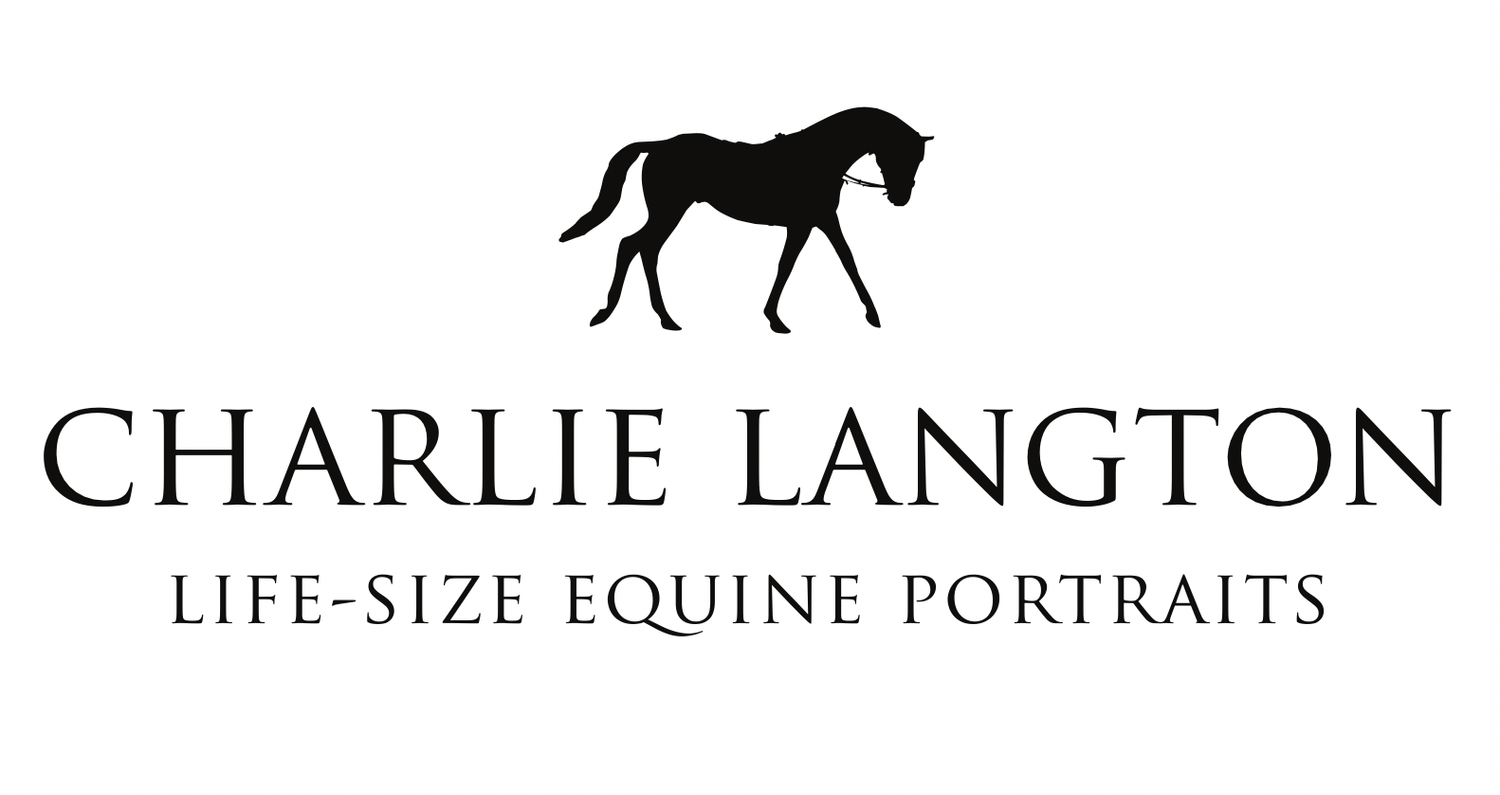
YEATS
THE PROCESS
"The sculpture of Yeats began last summer with a week of measuring, sketching and sculpting at Coolmore Stud in Ireland, where he stands as a stallion. This is the most important stage for me, as I was able to get to know the horse from watching him in his daily routine and then spend time speaking to the lads and all those that know Yeats well. It was vital that I gained a complete picture of the horse from those who know him best as I was keen to capture the character of the horse as well as his physical dimensions.
I had my own very strong mental image of Yeats parading around the ring at Ascot to add to this information and therefore I could establish a pose that married all these elements together. He always carried his head in a very distinctive way and later on in his career, as his neck developed, he became instantly recognisable. He is beautifully proportioned. From the side he is deep and powerfully built, especially through the shoulder: he is sinuous and yet every line flows with an effortless grace. From the front he is streamlined and slender: even his ears are close together when pricked. It is easy to see why he had so much success when one considers this combination of power and aero dynamism.
But the thing that really strikes me about Yeats is how he moves. He is almost regal in his head carriage and he glides over the ground effortlessly. I could not have had a better subject for my first life-size bronze.
Having made a one-quarter-scale maquette of Yeats I began work on the ten per cent over life-size version in October 2010. The process involves a steel armature, on top of which I added clay. Over forty bags were needed, which equates to more than one tonne. I used over sixty measurements taken from Yeats, along with video footage, my sketches and maquettes and also made trips back to Coolmore to see him and to refresh my eye. He took over eight hundred hours to sculpt.
I built a new studio especially for working on this scale so that I could have the room to stand back and see the work from a distance, which is vital. However, it is a very large space to keep warm and it was a constant battle against the cold to prevent the clay from freezing. Every night he was wrapped up in a New Zealand rug and sleeping bags. Once I had come to a point where I thought I was getting close to being happy with the sculpture, the mould making could begin. This was done over the course of ten days by three highly skilled mould makers. He was moulded in seven sections (the four legs, head, tail and body). The moulds were then taken to the foundry and a combination of the lost wax process and sand casting were used to create the bronze
I hope more than anything that my sculpture does justice to Yeats and that those who know him best will think that I have captured his presence and character. Yeats is an Ascot legend and I feel extremely privileged to have been chosen to sculpt him."









